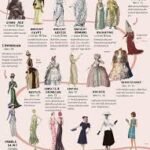The Art and Science of Fashion Design: Unveiling the Creative Process
Fashion design is a fascinating blend of art, craftsmanship, and innovation. It’s the creative process that transforms a simple idea into a beautifully crafted garment or accessory that can influence trends and culture. Whether you’re an aspiring designer or a fashion enthusiast, understanding the intricacies of fashion design can deepen your appreciation for this dynamic field. In this blog, we’ll explore the journey from concept to creation and the key elements that define successful fashion design.
1. The Conceptualization Stage

Every great design starts with an idea. The conceptualization stage is where fashion designers sketch their visions, experiment with themes, and set the direction for their collection. This phase often involves:
- Inspiration Gathering: Designers draw inspiration from various sources such as art, nature, history, or personal experiences. Mood boards, which combine images, colors, and textures, help in visualizing the overall theme and mood of the collection.
- Research: Understanding current trends, historical fashion influences, and market needs is crucial. Designers often study fashion shows, magazines, and social media to stay updated.
- Sketching: The initial sketches are where ideas start to take shape. Designers use these sketches to experiment with silhouettes, details, and compositions.
2. Fabric Selection and Textiles

Fabric selection is a pivotal aspect of fashion design. The choice of material not only affects the garment’s look but also its feel and functionality. Key considerations include:
- Texture and Drape: Fabrics can range from soft and flowing to structured and stiff. The texture and drape influence how a garment falls and fits.
- Color and Pattern: Designers choose colors and patterns that align with the collection’s theme. This might involve selecting solid hues, prints, or intricate patterns.
- Fabric Types: Different fabrics serve different purposes. For instance, silk is often used for elegant evening wear, while denim is popular for casual attire.
3. Pattern Making and Prototyping

Turning sketches into wearable garments involves creating patterns and prototypes:
- Pattern Making: Patterns are templates that guide the cutting and sewing of fabric pieces. Designers create these patterns based on their sketches, ensuring the garment will fit and flow as intended.
- Prototyping: A prototype or muslin garment is sewn to test the design. This stage allows designers to see how their ideas translate into a physical garment and make necessary adjustments.
4. Construction and Tailoring

The construction phase is where the design comes to life:
- Sewing: Skilled seamstresses or tailors sew the fabric pieces together, following the pattern and design details.
- Fitting: Multiple fittings ensure that the garment fits perfectly. Adjustments are made to accommodate body shapes and enhance comfort.
- Finishing Touches: Details such as buttons, zippers, and embellishments are added. These finishing touches can elevate a design from good to extraordinary.
5. Presentation and Marketing
Once the garments are complete, they need to be presented to the public:
- Fashion Shows: Designers often showcase their collections at fashion shows. These events allow them to present their work to industry professionals, media, and potential buyers.
- Marketing and Branding: Effective marketing strategies help in promoting the collection. This may involve photo shoots, social media campaigns, and collaborations with influencers.
- Retail and Distribution: Finally, the garments are prepared for sale. This involves setting up retail channels, online stores, and managing inventory.
6. Sustainability and Innovation

Modern fashion design increasingly incorporates sustainability and innovation:
- Eco-friendly Materials: Many designers are opting for sustainable fabrics and materials that minimize environmental impact.
- Technological Integration: Innovations such as 3D printing, smart textiles, and virtual fashion shows are transforming the design process.
Conclusion
Fashion design is a multifaceted process that combines creativity with technical skill. From the initial spark of inspiration to the final presentation, every step in the design process is essential to creating garments that not only look stunning but also resonate with people. As fashion continues to evolve, designers are embracing new technologies and sustainability practices, shaping the future of the industry. Whether you’re interested in the artistic side or the technical aspects, fashion design offers a rich and exciting world to explore.


